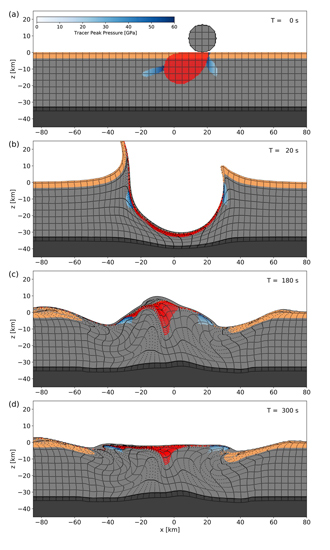Doomsday Scenario for the Non-avian Dinosaurs
Dinosaur-dooming Bolide Struck Earth at Worst Possible Angle
The extra-terrestrial object, whether it was a comet or an asteroid, that devastated our planet some sixty-six million years ago, struck Earth at the “deadliest possible” angle according to new research published this week in the journal Nature Communications. Computer simulations created by researchers based at Imperial College London indicate that the huge object struck Earth at an angle of 45 to 60 degrees to the horizontal. This maximised the amount of climate-changing gases that were thrust into the upper atmosphere.
A Sinkhole Near the Chicxulub Crater in Mexico

Picture credit: Jamie Thompson
The Significance of the Impact Trajectory
The severity of an extra-terrestrial impact is influenced by a number of factors. For example, the size and the mass of the bolide, the speed of the impact and the trajectory and direction of impact. The impact direction and the angle of the collision affect the amount of ejector that is thrown up into the atmosphere. For the non-avian dinosaurs, it was a question of a number of factors that exacerbated the mass extinction event. Although there has been a considerable amount of research carried out on Chicxulub crater the impact trajectory remains controversial.
The use of three-dimensional computer simulations along with geophysical observations suggests that the crater was formed by a steeply-inclined impact from the northeast. Such a strike likely unleashed billions of tonnes of sulphur. The sulphur would have reacted with the oxygen and other elements to form acid rain which would then have fallen to Earth and further devastated the environment. The debris in the atmosphere would have blocked out the sun and triggered a nuclear winter effect. This catastrophe led to the extinction of 75% of life on Earth.
The simulations were performed on the Science and Technology Facilities Council (STFC) DiRAC High Performance Computing Facility.
Plotting a Momentous Few Minutes in the History of Planet Earth

Picture credit: Imperial College London/Nature Communications
Lead author of the scientific paper, Professor Gareth Collins of the College’s Department of Earth Science and Engineering stated:
“For the dinosaurs, the worst-case scenario is exactly what happened. The asteroid strike unleashed an incredible amount of climate-changing gases into the atmosphere, triggering a chain of events that led to the extinction of the dinosaurs. This was likely worsened by the fact that it struck at one of the deadliest possible angles.”
The Crater Creation
The top layers of rock around the Chicxulub crater in the Yucatan peninsula contain high amounts of water as well as porous carbonate and evaporite material. When disturbed and greatly heated by the energy of the impact, these rocks would have been vaporised flinging huge amounts of the greenhouse gas carbon dioxide, sulphur and water vapour into the atmosphere. The sulphur and other particles would have formed aerosols as well as acidifying the atmosphere. These aerosols would have blocked out sunlight stopping photosynthesis and leading to the collapse of food chains. The world would have been plunged into a nuclear winter.
A Geophysical Map of the Impact Crater

Picture credit: Imperial College London/Nature Communications
Studying the Dinosaur Extinction
Working in collaboration with colleagues from the University of Freiburg (Germany) and the University of Texas at Austin the impact event was re-created in extensive detail, which will help scientists to better understand impact craters on our own planet as well as those found elsewhere within the solar system. Crucial to determining the angle and direction of the impact was the relationship between the centre of the crater, the centre of the peak ring (a circle of mountains made of heavily fractured rock inside the crater rim) and the centre of dense, uplifted mantle rocks.
Co-author of the scientific paper, Dr Auriol Rae (University of Freiburg) added:
“Despite being buried beneath nearly a kilometre of sedimentary rocks, it is remarkable that geophysical data reveals so much about the crater structure, enough to describe the direction and angle of the impact.”
Everything Dinosaur acknowledges the help and assistance of a media release from Imperial College London in the compilation of this article.
The scientific paper: “A steeply-inclined trajectory for the Chicxulub impact” by G. S. Collins, N. Patel, T. M. Davison, A. S. P. Rae, J. V. Morgan, S. P. S. Gulick, IODP-ICDP Expedition 364 Science Party and Third-Party Scientists published in Nature Communications.
Visit the Everything Dinosaur website: Everything Dinosaur.

